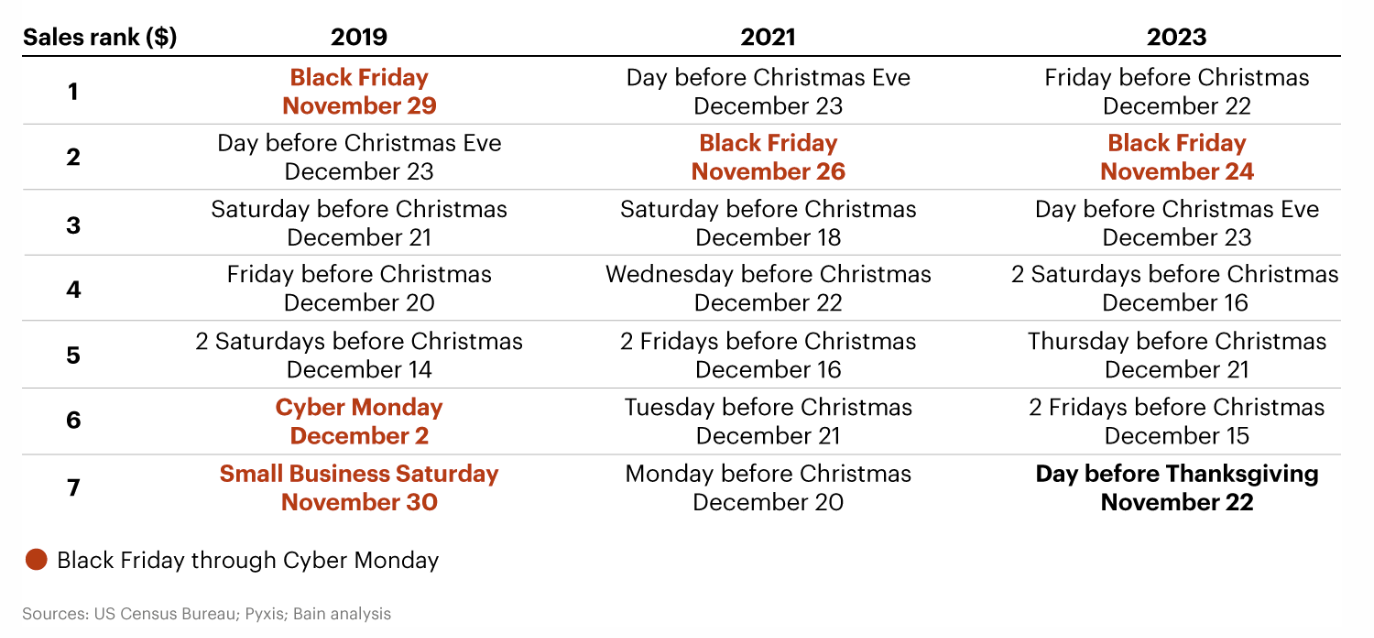Share on social
Highlights
The 2024 holiday shopping season is officially here, with Black Friday kicking off one of the biggest shopping weekends of the year. According to Bain & Company’s research, U.S. retail sales during this period are expected to reach a record $75 billion — a 5% increase over last year. In the face of this surge, effective Demand Forecasting and Price Optimization are more critical than ever for retailers looking to maximize success.

According to NRF (National Retail Federation), a record 183.4 million people are expected to shop in-store and online from Thanksgiving Day through Cyber Monday.

The key to maximizing sales lies not just in last-minute promotions, but in robust Demand Forecasting and innovative Pricing Strategies that happen long before Black Friday/Cyber Monday weekend. Effective demand forecasting for Black Friday and Cyber Monday allows businesses to anticipate shopper behavior, optimize inventory, and align pricing to capture maximum value.
Understanding the Relationship between Demand Forecasting and Price Optimization During Black Friday and Cyber Monday
During high-traffic shopping events like Black Friday and Cyber Monday, the interplay between Demand Forecasting and Price Optimization is crucial for retailers aiming to maximize sales and profitability.
These two shopping events have become synonymous with high consumer spending, making it essential for businesses to predict demand accurately. By understanding the customers’ needs and priorities, purchasing habits and leveraging data-driven insights, businesses can create compelling offers that draw customers in and encourage higher spending. It’s not just about slashing prices; it’s about creating strategic price points that resonate with consumers while ensuring profitability.
This is How Demand Forecasting and Price Optimization Work Together
Accurate demand forecasting enables retailers to anticipate consumer purchasing behavior, allowing them to adjust prices dynamically to capitalize on anticipated demand surges.
1. Predicting High-Demand Products
Demand forecasting uses historical data, current market trends, and consumer behavior to predict which items will see the most sales. This helps retailers determine inventory levels and prioritize specific products in their marketing campaigns.
2. Setting Competitive Yet Profitable Prices
Price optimization ensures that these high-demand items are priced attractively enough to draw customers while maintaining profitability.
3. Creating Bundles and Strategic Promotions
With demand forecasting insights, businesses can identify opportunities to bundle related products or create targeted promotions that encourage higher spending.
4. Avoiding Stockouts and Overstock
Effective demand forecasting helps retailers stock just enough inventory to meet demand without tying up capital in excess stock or losing sales due to stockouts. Pricing strategies can then be adjusted dynamically to clear remaining inventory as the shopping weekend progresses.
For retailers, the stakes of Black Friday-Cyber Monday weekend couldn’t be higher. These shopping events often determine the success of the entire holiday season — and, in some cases, the year. By leveraging demand forecasting solutions to understand what customers want and price optimization strategies to set prices, businesses can achieve the perfect balance of driving sales, clearing inventory, and maximizing profit.
Where Churchill Comes in:
At Churchill, we understand the unique pressures retailers face during Black Friday and Cyber Monday. For over 35 years, we’ve been empowering businesses with solutions designed to optimize performance and capitalize on pivotal shopping periods. Here’s how our AI-based Demand Forecasting solutions can make a difference:
- Anticipate Shopper Behavior: Understand which products will be in demand and prepare accordingly.
- Optimize Inventory: Avoid costly stockouts or excess inventory by accurately predicting sales patterns.
- Enhance Decision-Making: Use actionable insights to guide marketing strategies, inventory allocation, and staffing.
For instance, our Short Life Cycle Demand Forecaster™ (SLC) is an advanced “sell-through” demand forecasting software that supports various retail planning applications. It generates detailed consumer demand forecasts for store allocation and replenishment, promotions planning and execution, price optimization, and merchandise planning/open to buy.
When it comes to pricing, Churchill’s solutions are designed to go beyond simple markdowns, offering assistance in:
- Setting Strategic Prices: Develop competitive yet profitable pricing strategies tailored to shopper expectations.
- Implementing Dynamic Pricing: Adjust prices in real-time based on demand, competitor activity, and inventory levels.
- Maximizing Promotions: Identify opportunities for bundling, discounts, or value-added offers that boost sales and customer satisfaction.
For example, our Markdown Price Optimization™ (MPO) solution combines the strengths of the Short Life Cycle Demand Forecaster™ and the Price & Promotional Demand Forecaster™. It recommends optimal pricing actions, including determining when to take markdowns, the appropriate number of markdown levels, and specific price discounts that best achieve business objectives such as revenue maximization and inventory clearance.
By leveraging these advanced tools, retailers can navigate the complexities of the holiday season, ensuring they meet consumer expectations and achieve financial success.
Black Friday and Cyber Monday present both opportunities and challenges for retailers. The ability to accurately predict demand and implement strategic pricing can be the difference between a successful holiday season and missed opportunities.
At Churchill Systems Inc., we provide advanced AI-driven demand forecasting software solutions that utilize historical data, predictive analytics, and what-if scenarios to help retailers anticipate shopper behavior, optimize inventory, and enhance decision-making.
Our pricing solutions go beyond simple markdowns, offering strategic pricing strategies tailored to shopper expectations, dynamic pricing adjustments based on real-time data. By leveraging our expertise, retailers can navigate the complexities of the holiday season, ensuring they meet consumer expectations and achieve financial success.